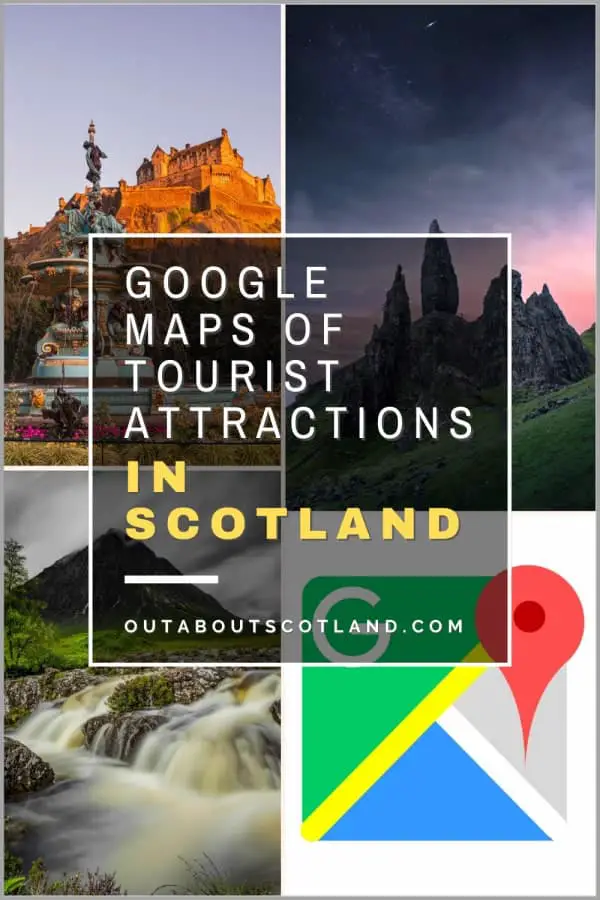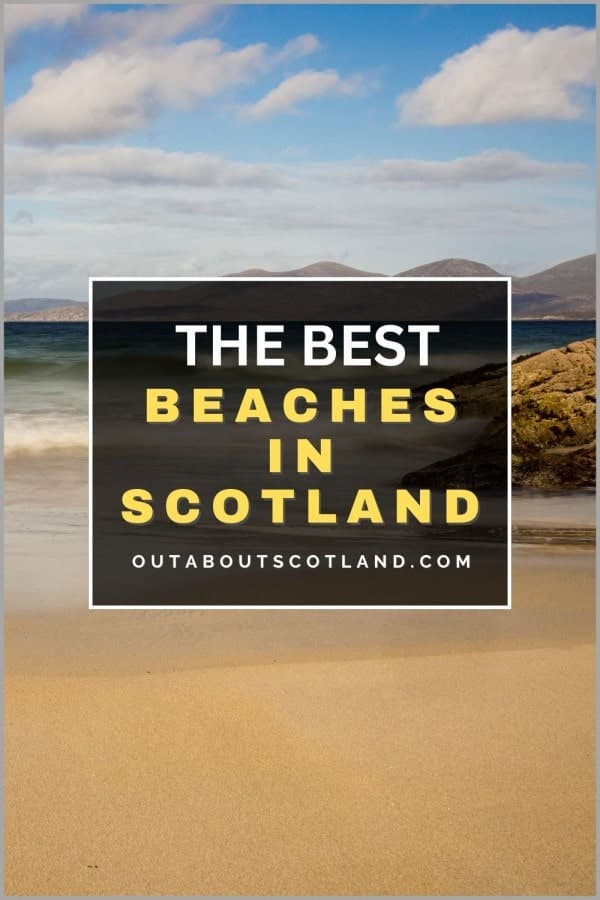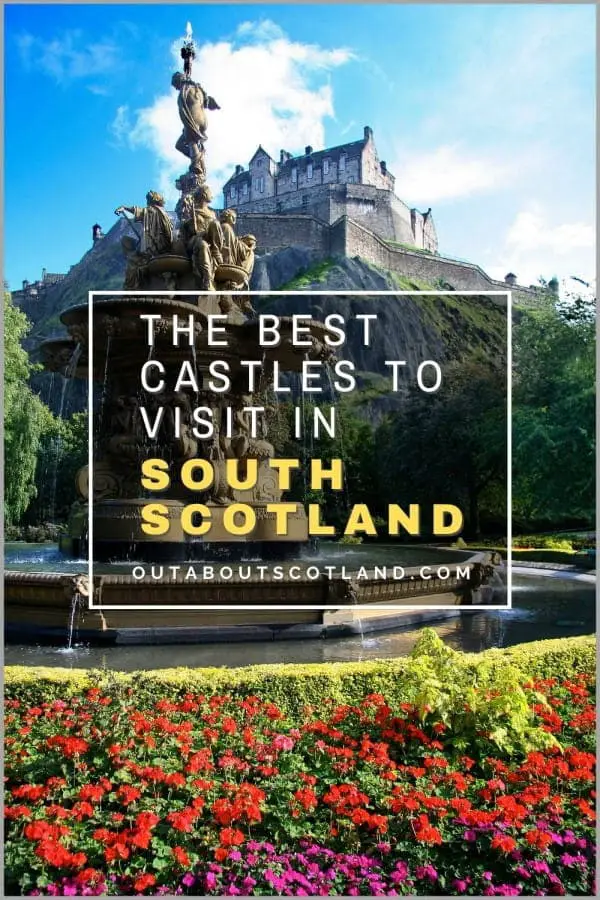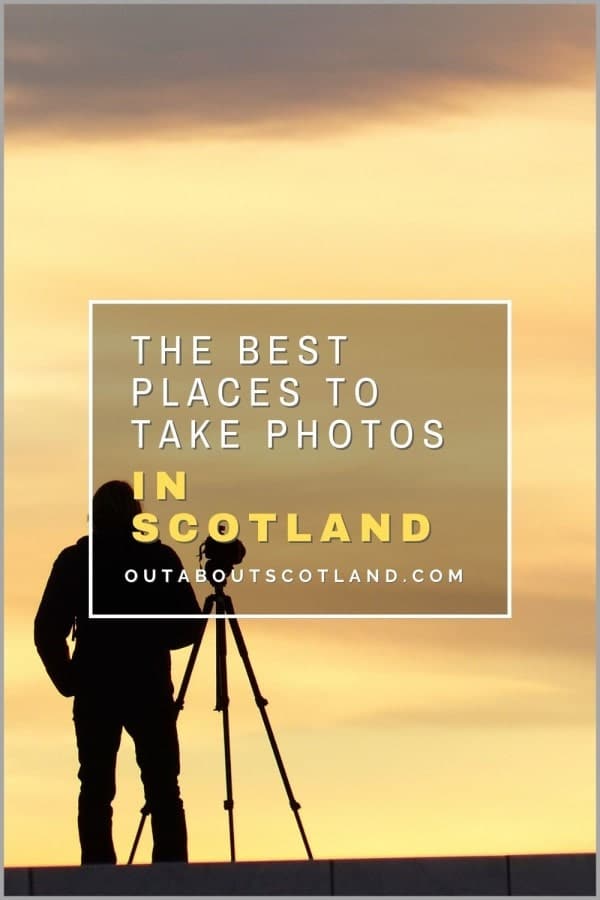Enjoying a weekend away in Scotland is a great way to reconnect with your family, forget about the pressures of midweek life, and recharge batteries that have become depleted from the mind-numbing daily commute.
In this article, you’ll find a collection of recommended things to do on a cheap weekend break in Scotland that are perfect for families, couples, and solo explorers alike, and they all have free admission. You’ll also find a few tips on how to save money on accommodation as well as resources to help you make your money stretch further during your visit.
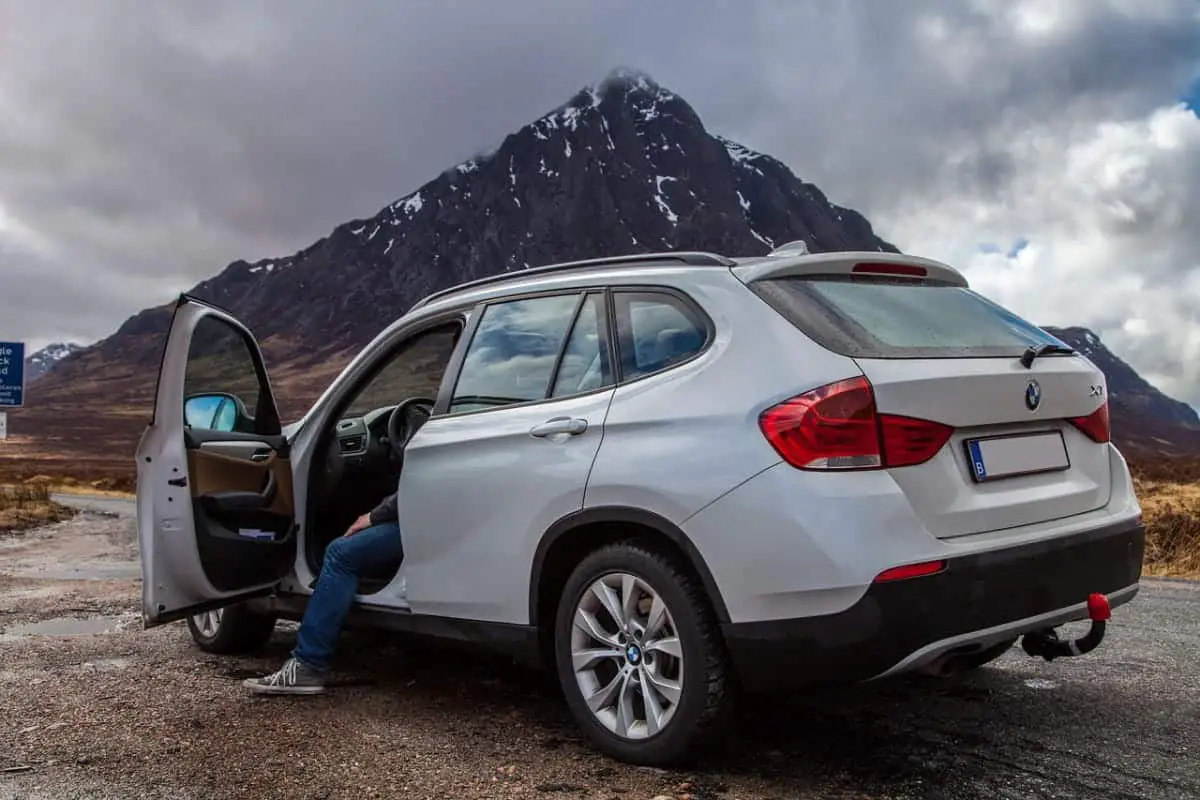
Cheap Places to Visit in Edinburgh
As the capital of Scotland, you might expect Edinburgh to have the cream of the crop when it comes to cultural attractions, so you’ll be pleased to know the city delivers them by the shovel load. From the National Art Gallery in Princes Street to the National Museum on Chambers Street, Edinburgh is jam-packed with places to visit that will keep you entertained for an entire weekend, whether you’re on your own or have a family in tow.
Although there are dozens of tourist attractions in the city centre, many of them charge an extortionate entrance fee (hello, Edinburgh Castle), so in the following list, I’ll give you a selection of the best places that are completely free to get in.
The National Museum of Scotland. This is one of the major tourist attractions in Scotland as not only is it located in a prime position in Edinburgh, it’s absolutely enormous. Inside, there are 5 floors of exhibits, artefacts, exhibitions and displays that cover every aspect of life imaginable, from science and technology to art, ancient history, design, natural history, world culture and everything in between.
The Scottish National Gallery. As the home of Scotland’s national collection of artworks, this is one of those city centre attractions that you almost have to visit while you’re in Edinburgh.
The vast neoclassical buildings are impossible to miss as they’re located in the middle of Princes Street Gardens and a walk inside will take you around masterpieces by Rembrandt, Monet, Van Gogh, and many more. There is also an excellent restaurant, café and gift shop on site.
The Scottish National Portrait Gallery. This gallery is a little more difficult to find as it’s located north of St. Andrews Square at the junction of Queen Street and York Place, but it’s certainly worth looking for if you have an interest in art or Scottish history. The National Portrait Gallery holds the national collection of portraits (unsurprisingly) as well as one of the largest collections of photographs in the world, many of which are from the very first days of photography.
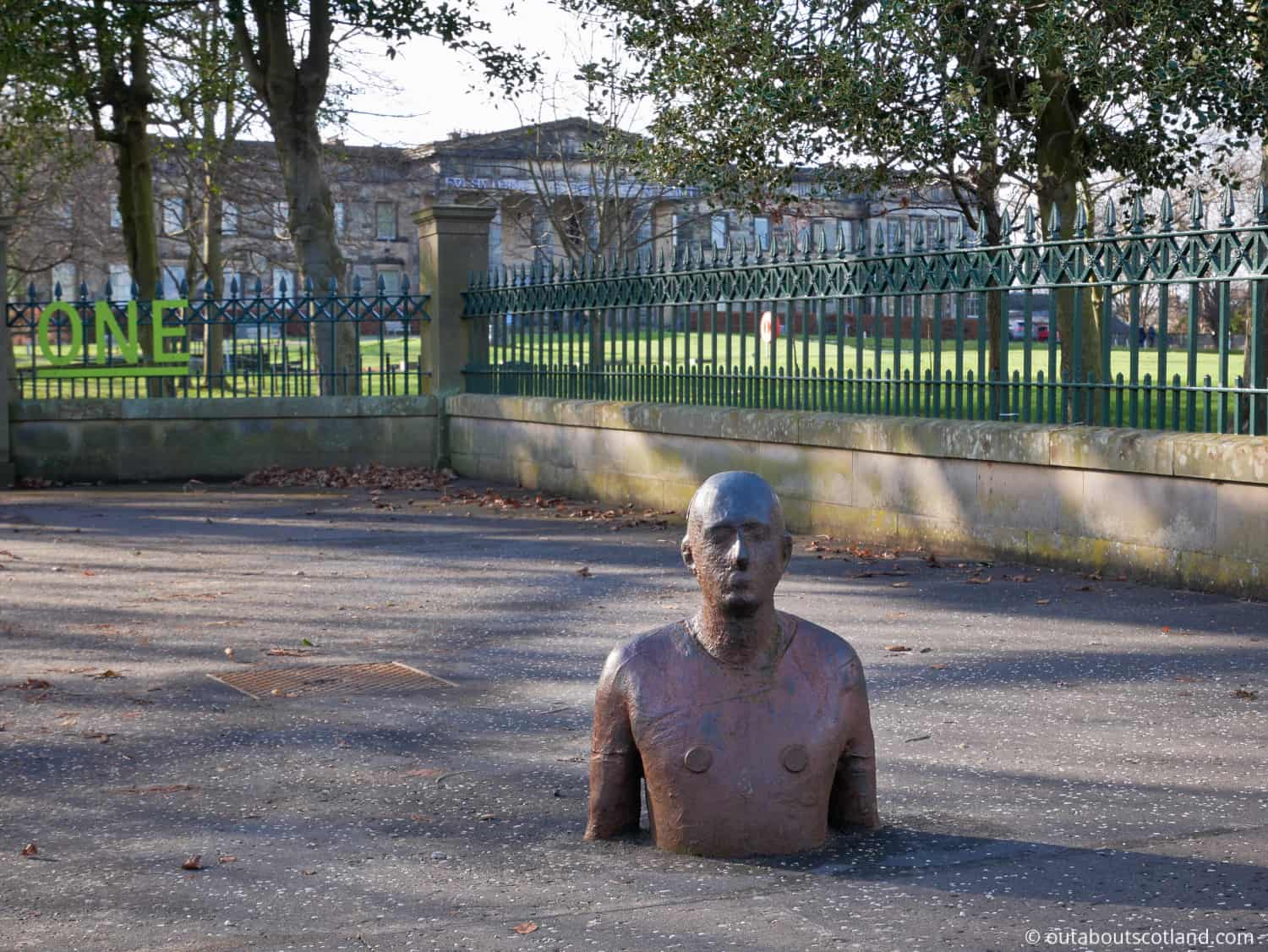
The Scottish National Gallery of Modern Art. This gallery is divided into two buildings—the Modern One and the Modern Two—situated on Belford Road to the west of the city centre near Dean Village.
The gallery displays modern artworks both inside the buildings and outside in landscaped gardens, which makes a visit a great way to spend a few hours whatever the weather is doing. As a bonus, The Water of Leith is nearby, which features some of the best walks in Edinburgh, second only to Holyrood Park.
The Museum of Edinburgh. The last three museums in this list are all located on The Royal Mile in Edinburgh’s Old Town, which is another free attraction that has to be included in a cheap weekend in Edinburgh.
Unlike the national museums, the Museum of Edinburgh is relatively small, but it’s no less interesting for it. The displays are dedicated to showing visitors artefacts collected from the Old and New Towns, which include pottery, silverware, clothing, and porcelain, as well as displays featuring Greyfriars Bobby and the TV series Outlander.
The People’s Story Museum. This museum is located opposite the Museum of Edinburgh in one of the city’s most recognizable buildings – the Canongate Tollbooth. The collections are dedicated to the culture, trades and crafts of the people that lived in Edinburgh from the 18th to the late 20th century and they include recreations of a wartime kitchen, a bookbinder’s workshop and a jail cell.
The Museum of Childhood. This building is located further up the High Street, on the opposite side of the road from John Knox House. It’s the best museum on The Royal Mile in my opinion purely because it’s so fun to walk around.
Instead of dusty old books and obscure objects, inside the Museum of Childhood, you’ll find toys and games from the 1800s to the present day, many of which are bound to have featured in your own childhood. There are five galleries to explore that display every type of toy you can think of, from porcelain dolls to Steiff bears, along with modern toys like Buzz Lightyear and the earliest game consoles.
Cheap Places to Visit in Glasgow

Glasgow is the second most-visited city in Scotland after Edinburgh, and while it’s arguably not as attractive, it equals its east-coast cousin when it comes to places to visit – helped in no small part by the fact it’s the biggest city in Scotland.
Glasgow is also the second-greenest city in Britain (beaten by Edinburgh) and it’s home to a wide range of festivals including TRNSMT and the World Pipe Championships, plus it has some of the best shopping centres in the country and one of the best-preserved medieval streets in Europe.
Many of Glasgow’s top attractions are completely free to visit and most of them are suitable for visitors of all ages, including Kelvingrove Museum, the Riverside Museum of Transport, Glasgow Botanic Gardens and Glasgow Green.
Kelvingrove Art Gallery and Museum. Kelvingrove has been enthralling visitors for over 120 years and it contains one of the largest collections of antiquities and paintings in Britain, with displays that cover wildlife, natural history, classical art and the history of Glasgow.
As a destination for a weekend visit it can’t be beaten, especially if it’s a sunny day when the surrounding Kelvingrove Park comes alive thanks to its children’s play areas, sports parks and picturesque walks along the River Kelvin Walkway.
The Riverside Museum of Transport. This museum and the Tall Ship next to it are situated on the River Clyde, which powered Glasgow’s world-leading shipbuilding industry for most of the last century. Those days are now long gone, but the Riverside Museum serves to educate visitors about the Cydebuilt ships that were renowned the world over, as well as all other forms of transport, including trains, motorbikes, cars, and aircraft.
The Tall Ship. The Tall Ship,otherwise known as The Glenlee, is one of the last remaining examples of a Clydebuilt ship that’s still afloat today. Admission is free, and visitors get to explore the Victorian sailing ship from the upper decks to the galley and the depths of her cargo holds.
It’s a fascinating attraction and much bigger than you might expect so plan at least a couple of hours for your visit. The icing on the cake is the excellent café which has to be the only place in the city where you can munch a cheese toastie while looking out of a porthole.
The Gallery of Modern Art. If you’re in Glasgow city centre you’ll no doubt want to explore the shops on Queen Street, but before you do I recommend taking the time to take a quick look around the modern art gallery at Royal Exchange Square. The gallery houses one of the largest modern art collections in Britain and visitors are welcome to explore the free and paid exhibitions as well as the extensive modern art library.
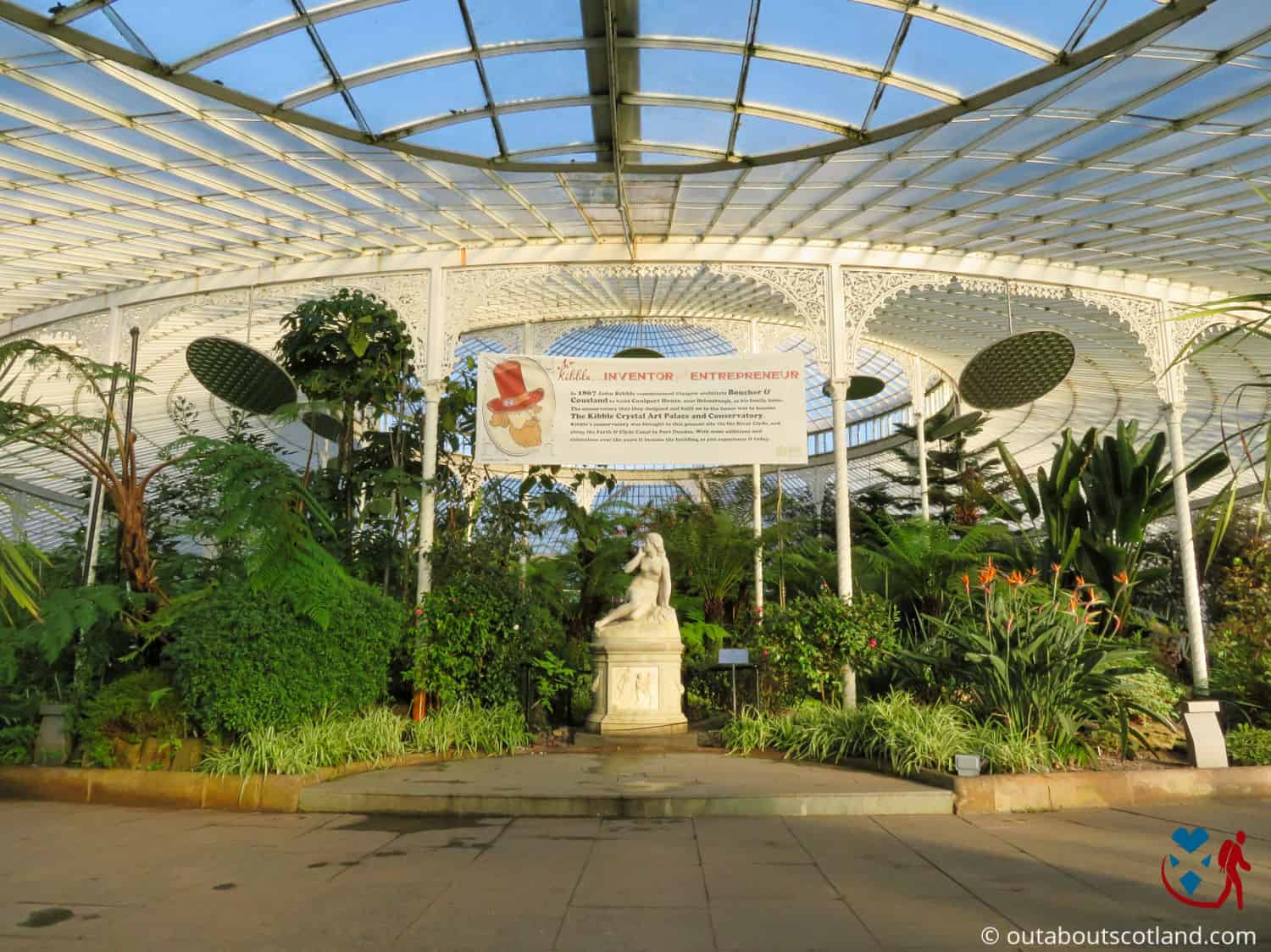
Glasgow Botanic Garden. One of the top outdoor attractions in Glasgow is the botanic garden situated between the A82 and the River Kelvin, just a 10-minute walk from the university. There are over 12,000 different plant species spread across manicured flowerbeds and enormous glasshouses, with the highlight being the stunning Victorian-era Kibble Palace with its domed iron and glass conservatory that’s home to the national collection of ferns.
Glasgow Cathedral. This historic attraction barely needs an introduction as it’s one of the most famous buildings in Scotland. Like Edinburgh’s castle, Glasgow’s cathedral is the centre point of the city and it’s one of the best-preserved medieval buildings in Scotland.
The nave of the cathedral, which features stunning stained-glass windows and the eerie St. Kentigern tomb, is open to visitors without charge thanks to a partnership between Historic Environment Scotland and the Church of Scotland.
The Necropolis. This historic site is located on a hill behind the cathedral, which, in my opinion, is the best viewpoint in the city.
The Necropolis is a Victorian cemetery that’s one of the largest in Britain (37 acres in total), and it’s the final resting place for some of the most influential Scots in history, including architect Charles Rennie Mackintosh and industrialist Charles Tennant. Many of the gravestones feature elaborate carvings, and despite the fact that it’s a graveyard, it’s actually a lovely place to go for an afternoon stroll.
Cheap Places to Visit in the Highlands
Bidean Nam Bian
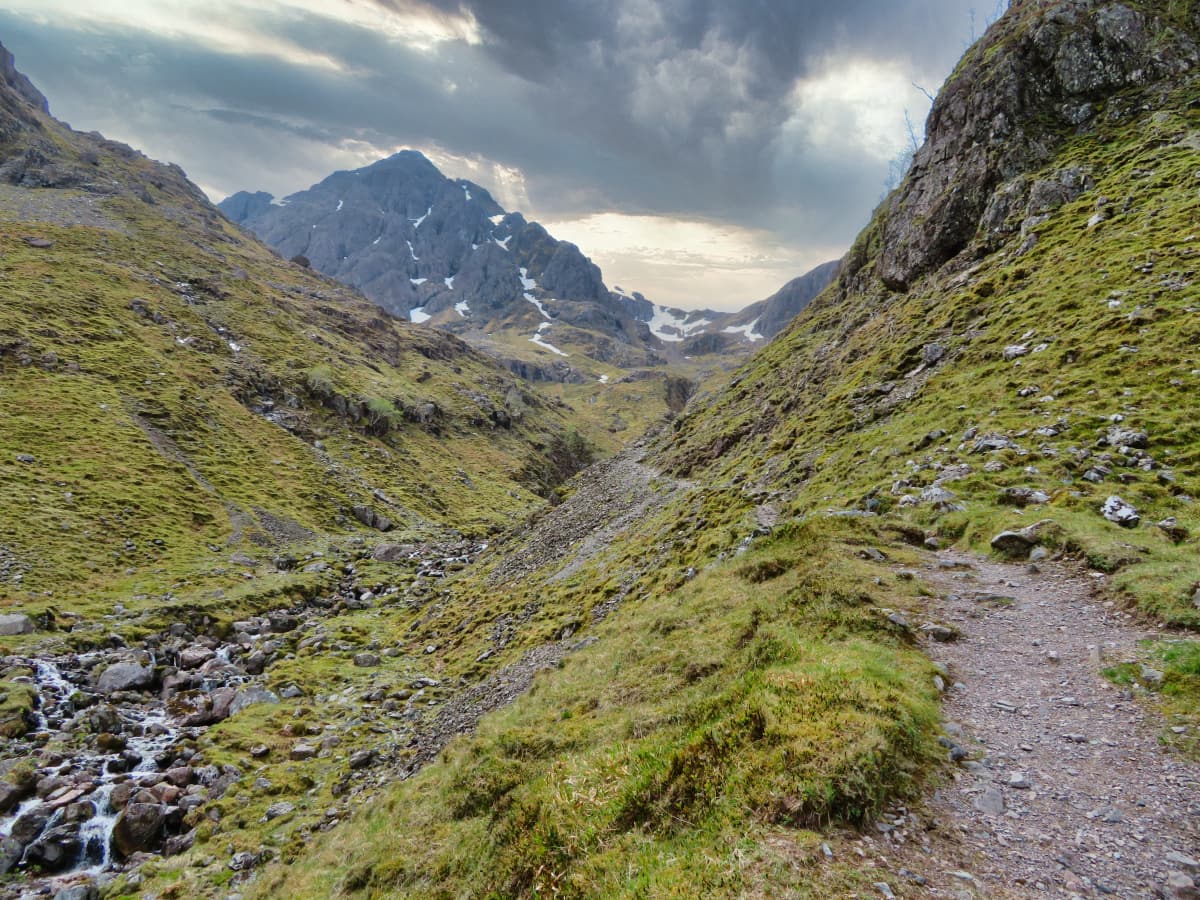
Bidean Nam Bian, located to the south of Glencoe in the Scottish Highlands, is well-known amongst hill walkers and Munro baggers for the fantastic views it offers from the ‘Three Sisters of Glen Coe’, the three steep ridges on the north face that extend into the Glen.
The huge mountain complex rises to 1,150 metres at its highest point and has several ascending routes of varying difficulty, though the easier path from the Glen Coe car park is by far the most used by tourists. As a destination for a cheap place to visit you really can’t beat this mountain region as not only is it free (apart from the car park cost), but the views are gobsmacking.
Two of the peaks of the three sisters, Beinn Fhada and Gearr Aonach, are separated by a partly concealed glen known as the Lost Valley, which at one time was used by Clan Macdonald to hide their livestock from thieves but is today mainly used by hikers making their way up to the Bidean ridge.
The most popular route up into the mountains heads out over a 2.5-mile path, starting at the Glen Coe car park near Loch Achtriochtan and finishing at the peak of Stob Coire nan Lochan. This route is quite busy, and during the summer, it’s probably best to avoid it midday at weekends as the car park gets clogged up with coachloads of tourists visiting the nearby loch.
The path is easy-going at the start but it becomes a fairly tricky scramble across several rocky sections in the middle, although the views at the top make up for the effort needed during the ascent.
Partway along the route, you’ll come across an impressive waterfall thundering down the mountainside, which makes a great place to stop and take a breather, but be careful if you try to get down to the pool under the waterfall as it’s very slippery.
The path continues up in the direction of Stob Coire nan Lochan where you’ll find another waterfall in a small box canyon before exiting out onto the summit of the north ridge. From there you’ll get amazing views in all directions and you can either head back down to the car park or push on further into the mountain range.
Address for your SatNav: Ballachulish, PH49 4HX, UK. Lat/Lon: 56.64419°N / 5.03345°W
Loch Ness
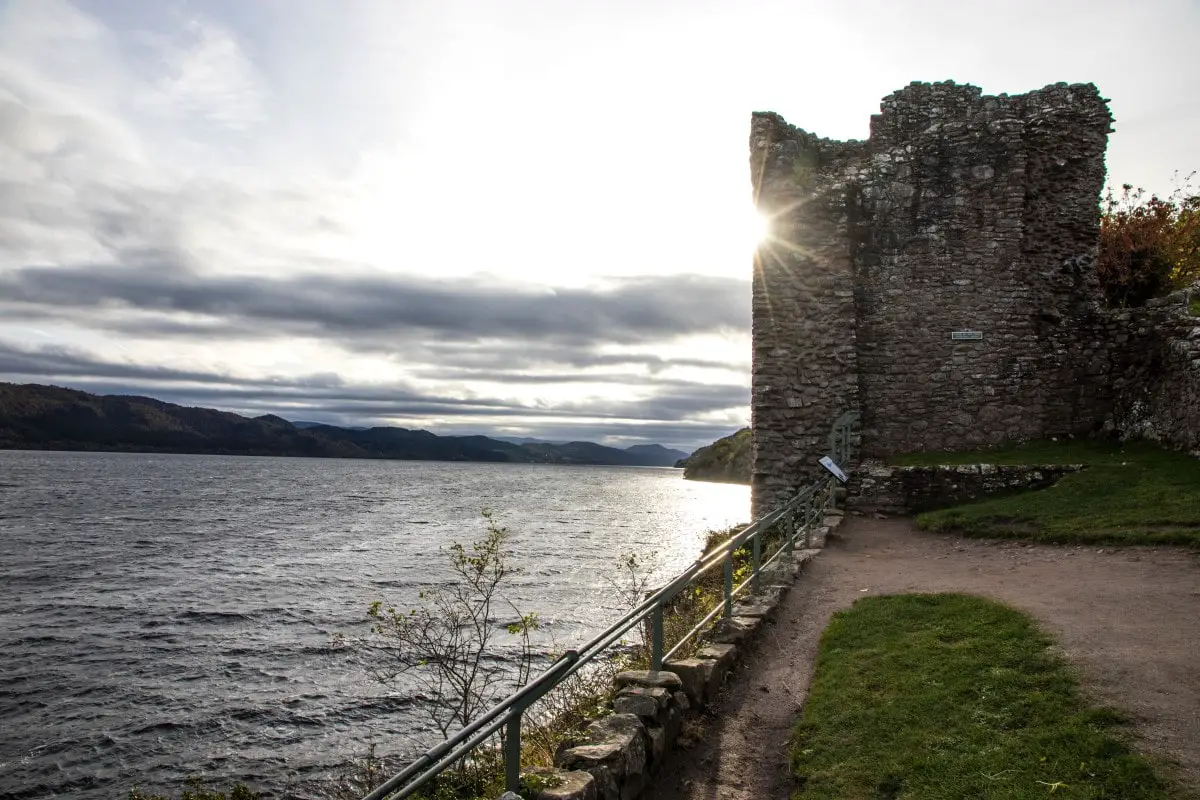
Loch Ness is without a doubt one of the most famous, most visited, and most photographed tourist attractions in Scotland. Not only is there an abundance of wildlife living both in the loch and along its banks, but there’s a rich history to be discovered thanks to famous tourist sites like Urquhart Castle.
Although the loch has more than its fair share of tour operators it’s possible to explore it for very little money thanks to the A82 which follows the shoreline the entire way along the loch’s western edge. This road is perfect for cycling along and you’ll see as many cyclists loaded up with tents as you will cars towing expensive caravans.
I’ll even go so far as to say that in the summer, the best way to enjoy the Loch is on a bike. After all, who wants to miss out on all those amazing views locked inside a metal box?
If you want to give the bike a rest, you’ll find walking trails running through the area, and there are even a couple that run alongside the water’s edge. There are lots of attractive villages dotted along the 23-mile length of Loch Ness, including Fort Augustus on the southern edge, which is a favourite stopping-off point for tourists.
If you’re well-versed in the intricacies of a fishing rod, then you might be keen to catch some of Scotland’s largest fish, and you’ll find several species living in the water of Loch Ness, with the famed Scottish Atlantic salmon living alongside brown trout, perch, roach, and char.
Fort Augustus can be found on the A82, at the head of Loch Ness.
- From Glasgow take the A82 via Crianlarich and Fort William to Fort Augustus – 132 miles.
- From Edinburgh, take the M90 to Perth, the A9 to Dalwhinnie, the A86 to Spean Bridge, and the A82 to Fort Augustus—157 miles.
- From Aberdeen take the A96 via Nairn to Inverness, then the A82 to Fort Augustus – 141 miles.
The Cairngorms
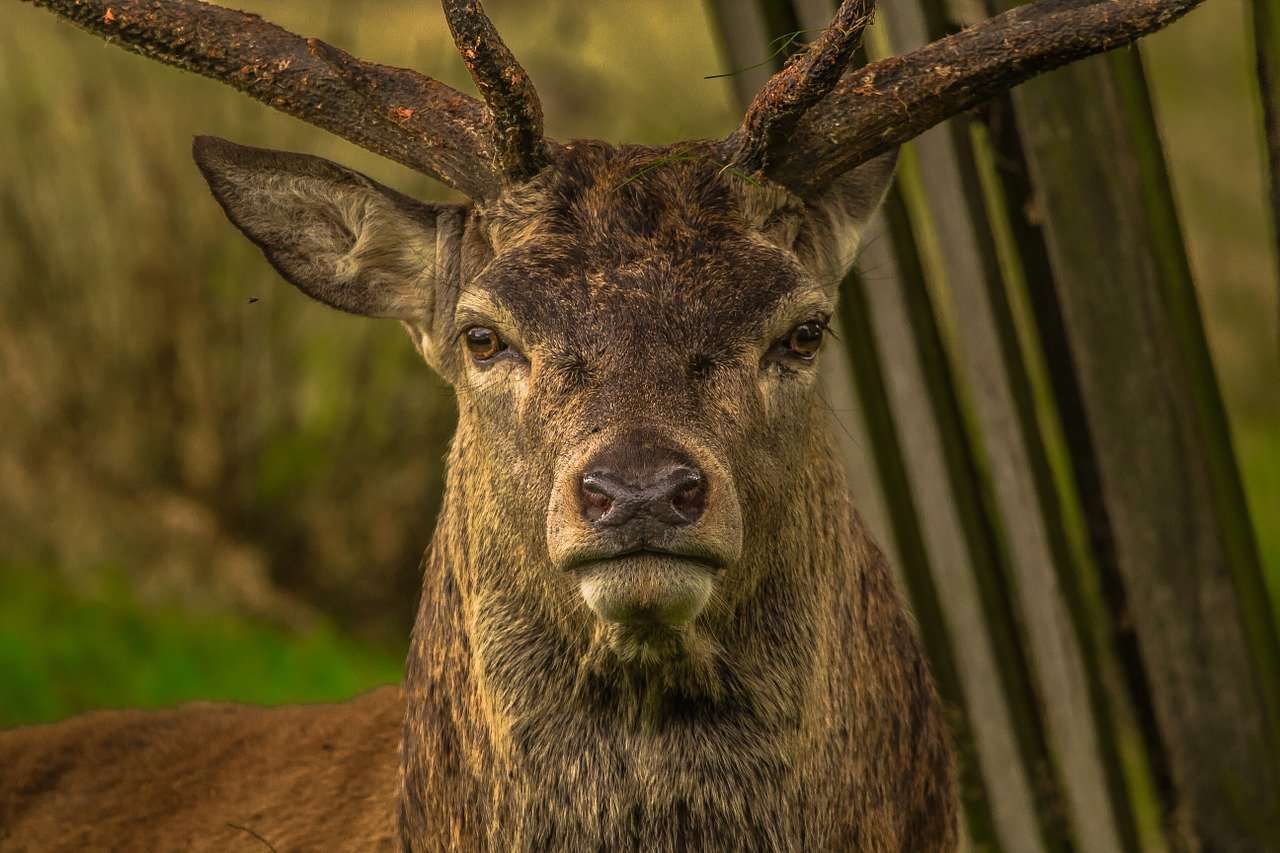
The best things in life are free, and to my mind, one of the best experiences you can have in Scotland is seeing its wonderful wildlife. There are many animal species to keep an eye open for on a weekend tour of the country and some of the best sightings are found in the Cairngorms, which include the majestic red deer.
These animals are the largest in Britain and it’s a real privilege to watch them roaming around the countryside, especially if the stags are in their rutting season when they battle against each other using their enormous antlers.
Alongside red deer, you’ll frequently find mountain hares, ptarmigan (a type of grouse), pine martens, and badgers all scurrying about as they forage for food, particularly in winter when many animals come down from the slopes to the warmer climate at the foot of the mountains.
Although much of Scotland’s wildlife hibernates through the winter you can still see plenty of other critters like our loveable red squirrels, and the fact they’re on lower ground means they’re much easier to spot and photograph.
While you could go all-out and pay an experienced guide to take you out into the Cairngorms perhaps the best way to experience Scotland’s wildlife is to just pack your backpack, pull on your boots, and set off on a trek across the rugged landscape.
If you’re going on a winter weekend break, make sure you check the weather and pack plenty of warm hiking gear. The last thing you want is to be stuck in the middle of nowhere without thermals when the temperature drops, and as the old Scottish saying goes, there’s no such thing as bad weather, only bad clothes.
Cheap Places to Stay in Scotland

So we’ve seen that it’s possible to visit tourist attractions in Scotland that don’t cost the earth, but what if you’re looking for somewhere to stay? Isn’t it true that family-friendly hotels in Scotland are horrendously overpriced?
My answer to that has to be ‘yes and no’ because it all depends on where you’re intending to take your overnight accommodation. If you’re planning a cheap sightseeing weekend, I can’t recommend you stay in Scotland’s city centres because the hotels are total tourist traps and even the so-called ‘budget’ options are pricey—unless you book into a hostel (see below).
Take the UK’s main budget hotel operator – Travelodge – for example. Spend a night in June at their Edinburgh Princes Street hotel and it’ll cost you a not-inconsiderable £140 (ish) per night for accommodation that can be best summed up as ‘adequate’. Yet head a few miles out to the town of Livingston and you can get a similar Travelodge room for around £60.
That’s less than half the price for a room that’s going to be virtually identical, and if you stay in Livingston you can get a ScotRail train (link to the Scotrail ticket page) to the centre of Edinburgh in around 30 minutes at a cost of just £5-6.
There are a few options below for cheap overnight accommodation in Scotland that offer a decent room at an affordable price, which aren’t quite up to Edinburgh’s Balmoral Hotel standards but are a lot cheaper.
Cheap Accommodation in Edinburgh
- Kick-Ass Hostels offer fun and friendly mixed and female-only dorms in the centre of the city with views looking out across Edinburgh Castle. Rooms in a mixed dorm can be had for only £18 while a private twin room costs around £50 per night.
- High Street Hostel is located less than a mile from the city centre and is the city’s original backpackers hostel. Close to all the attractions of Edinburgh, High Street Hostel features a great social room and has prices starting at £10 for a bed in a mixed dorm room.
- Edinburgh Backpackers Hostel has over 150 beds in dormitories and double, twin and single rooms less than a mile from the city centre across four separate buildings. A basic single private room can be had for as little as £25 depending on the time of year you visit.
- St. Christopher’s Edinburgh is a hostel nestled right in the heart of the Old Town that features free Wi-Fi, free breakfast and free city walking tours. There’s also an on-site bar and bistro, and prices for a bed in a mixed dorm start at a reasonable £13 per night.
- Cowgate Tourist Hostel is one of the few 2-star hostels in the city and it has a selection of mixed dorms and private rooms. Located in the Cowgate area in the heart of Edinburgh, prices for a budget twin room start at around £50 for 1 night.
Cheap Accommodation in Glasgow
- Euro Hostel Glasgow is located just 1.6 miles from the city centre and features mixed and female-only dorms, as well as en-suite rooms if you want a bit of privacy. Prices start at just £10 per night and include free Wi-Fi.
- Tartan Lodge provides affordable accommodation 2.5 miles from central Glasgow in a former church that has been converted into a collection of male and female dormitories and private rooms. A dormitory room bed can be had from just £18 per night and includes access to a social room and showers.
- The Glasgow Youth Hostel offers rooms in a Victorian townhouse overlooking Kelvingrove Park in the city centre. There are private rooms as well as shared apartments and prices include Wi-Fi, a social room and secure storage. Prices start at £13.50 for a bed in a shared room.
- Hampton Court Guest House is a bit more up-market than a hostel but offers reasonable prices for rooms only a 20-minute walk from the SSE Hydro and Kelvingrove Art Gallery and Museum. A single en-suite can be found for only £30 (depending on the time of year).
- Crosshill House in Glasgow features 12 budget rooms with Wi-Fi, an outdoor pool, a breakfast buffet, a gym, and is around one mile from the city centre. Standard rooms can be reserved for a very reasonable £30 per night (depending on the time of year).
Resources
Hostelling Scotland. Staying in a youth hostel isn’t for everyone, but it’s easily the best option for cheap holidays in Scotland’s cities. The Hostelling Scotland organisation has been going for over 90 years, and their website is easily the largest internet resource for hostels in Scotland.
Travel Supermarket. Although Booking.com is more famous I personally find Travel Supermarket to have the best deals and they’re much easier to book a complete holiday with. Their booking service includes car hire, flights, airport extras, travel insurance and hotels.
Ordnance Survey. If you want to enjoy the cheapest possible weekend in Scotland your best option is to go on a walking tour. Scotland has thousands of trails and finding the best ones is an overwhelming task – which is where the highly detailed and accurate maps from OS come into their own.
Confused.com. If you’re travelling by car in Scotland you’ll no doubt rack up the miles even if you’re only on a weekend road trip. One of the best tools to find cheap fuel near your location is the Confused.com website, although you have to sign up to get more than one search per day.
TomTom. Following on from the above, if you’re going on a road trip I highly recommend downloading the TomTop app onto your phone. Their maps have an option to follow the route that’s the most fuel-efficient and you’ll even save time on your journey with live updates that divert you around traffic jams.
Sightseeing Pass. If you’re visiting Edinburgh, you’ll save a packet on paid attractions by getting a City Pass which includes pre-paid entry to most of the top attractions. If you’re travelling elsewhere, you’ll get free entry to historic places with membership to the National Trust for Scotland.
Frequently Asked Questions
Is it expensive to travel in Scotland?
The cost of fuel in Scotland is around £1.50 per litre of petrol as of 2024. To fill up a family hatchback like a VW Golf will cost £70 to £80, giving 400 to 500 miles of driving.
Buses in Edinburgh and Glasgow are £4 to £5 for an unlimited-day ticket. A single train ticket from Edinburgh to Glasgow costs around £15, and a ticket from Edinburgh to Inverness costs around £30.
Is food expensive in Scotland?
Food purchased in hotels is expensive in Scotland, with breakfast averaging £15, lunch £10, and evening meals £20 to £30 per person.
Food purchased from a supermarket is comparatively cheap, and food for a full Scottish breakfast for 4 people will cost around £10 in total.
Food bought from high-street fast food outlets is no different in price from anywhere else in Britain. Expect to spend £2–3 for a take-out coffee and £5–6 for a sit-in sandwich.
What is the best month to visit Scotland?
There is no ‘best month’ to visit Scotland as winter has some of the best festivals including Edinburgh’s Christmas and Hogmanay and summer has the best weather.
If the weather is your main criteria for a visit to Scotland then June, July and August are the best months as the days are long with up to 19 hours of daylight (Shetland) and temperatures that average 19 °C (Edinburgh).
When should I visit Scotland to avoid midges?
Midges are most prevalent between May and September, although they will sometimes hatch a month earlier or later, depending on how mild the climate is.
In general, visiting Scotland outside of the midge season will protect you from them, and the winter months (December to March) are almost certain to be midge-free. Likewise, the east coast of Scotland has far fewer midges than the west coast.
What is the best town to stay in Scotland?
There is no one ‘best’ town to stay in Scotland as it depends on your personal preferences and interests. Some popular places to stay in Scotland include Edinburgh (the country’s capital city) and Glasgow (its largest city).
Both of these cities offer a wide range of attractions that include museums, galleries, and historic landmarks. Ultimately, the best town or city for you to stay in will depend on what you want to see and do while you’re in Scotland.


